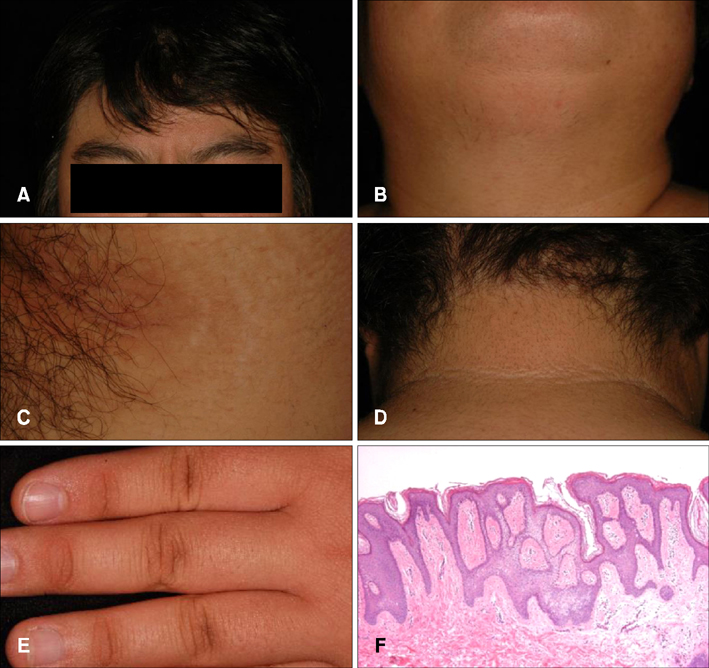Ann Dermatol.
2016 Oct;28(5):637-639. 10.5021/ad.2016.28.5.637.
A Case of Hyperandrogenism, Insulin Resistance, and Acanthosis Nigricans Syndrome; Increase in Proliferating Cell Nuclear Antigen and Decrease in Loricrin in Acanthosis Nigricans
- Affiliations
-
- 1Department of Dermatology, Faculty of Medicine, Oita University, Oita, Japan. hatano@oita-u.ac.jp
- 2Department of Endocrinology, Faculty of Medicine, Oita University, Oita, Japan.
- 3Department of Gynecotocology, Faculty of Medicine, Oita University, Oita, Japan.
- KMID: 2382891
- DOI: http://doi.org/10.5021/ad.2016.28.5.637
Abstract
- No abstract available.
MeSH Terms
Figure
Reference
-
1. Elmer KB, George RM. HAIR-AN syndrome: a multisystem challenge. Am Fam Physician. 2001; 63:2385–2390.2. Friedman CI, Richards S, Kim MH. Familial acanthosis nigricans. A longitudinal study. J Reprod Med. 1987; 32:531–536.3. Cruz PD Jr, Hud JA Jr. Excess insulin binding to insulin-like growth factor receptors: proposed mechanism for acanthosis nigricans. J Invest Dermatol. 1992; 98:6 Suppl. 82S–85S.
Article4. Krane JF, Murphy DP, Carter DM, Krueger JG. Synergistic effects of epidermal growth factor (EGF) and insulin-like growth factor I/somatomedin C (IGF-I) on keratinocyte proliferation may be mediated by IGF-I transmodulation of the EGF receptor. J Invest Dermatol. 1991; 96:419–424.
Article5. Sadagurski M, Yakar S, Weingarten G, Holzenberger M, Rhodes CJ, Breitkreutz D, et al. Insulin-like growth factor 1 receptor signaling regulates skin development and inhibits skin keratinocyte differentiation. Mol Cell Biol. 2006; 26:2675–2687.
Article
- Full Text Links
- Actions
-
Cited
- CITED
-
- Close
- Share
- Similar articles
-
- A Case of Hyperandrogenism, Insulin Resistance and Acanthosis Nigricans (HAIR-AN) Syndrome
- A Case of Acanthosis Nigricans Detected in Obese Infertile Woman
- A case of generalized lipodystrophy
- Syndromal acanthosis nigricans with insulin resistance
- Coexistence of Scleredema and Acanthosis Nigricans in a Patient with Diabetes Mellitus



